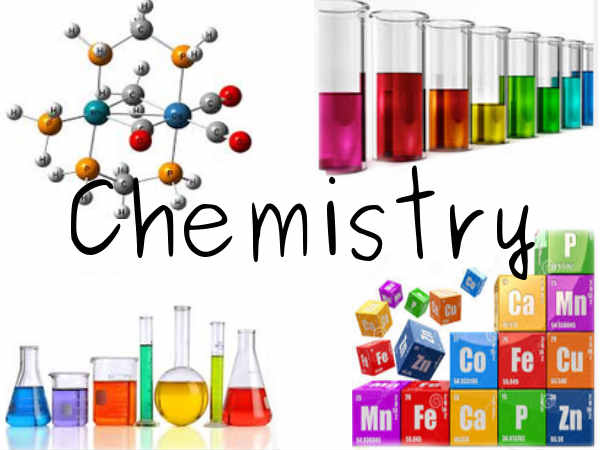Model questions for Class XI NEB Chemistry Exam 2077
Time: 3 hours F.M.: 75 P.M.: 27
Group-A (Very short questions)
Attempt any fifteen questions: 15 x 2 = 30
1. State law of equivalent proportions. 2
2. A divalent metal oxide contains 60% of metal. What is atomic weight of metal? 1+1
3. Calculate the mass in gram of: 1+1
a) 3 x 1023 molecules of methane.
b) 7.5 moles of Cl2.
4. Boiling point of two liquids P and Q are 750C and 850C respectively. Which of the two has higher vapour pressure at 750C? Give reason. 1+1
5. An oxide of nitrogen contains same of its own volume of nitrogen and its vapour density is 54. Determine its molecular formula. 2
6. What are the values of principal quantum number(n) and azimuthal quantum number(l) for the following subshells:
(i) 3p (ii) 4f 2
7. What is the difference between nuclear fission and nuclear fusion? 2
8. Write the Lewis structure of (a) H2O2 and (b)HNO3. 2
9. SO2 molecule has a bent shape while CO2 molecule has a linear shape, why? 1+1
10. Which one N or O has more electron affinity and why? 2
11. Calculate oxidation number of Nitrogen in
(i) NaNO3 (ii) NH4+ 1+1
12. State Le- Chatelier principle. What is the effect of temperature on the equilibrium of the following reaction:
N2(g) + 3H2(g) -- 2NH3(g) ; H = -93.6 KJ 1+1
13. Give two chemical tests to show that nascent hydrogen is more powerful reducing agent than molecular hydrogen. 1+1
14. Classify following oxides with proper reasoning: 1+1
(i) CO2 (ii) Al2O3
15. What is meant by fullerene? Mention its use. 1+1
16. Name any two gaseous compounds of each which are responsible for: 1+1
a) Photochemical smog
b) Green house effect
17. Give any two formula of ores of each which are applied for the following metallurgical operations:
a) Froth floatation 1+1
b) Leaching
18. Starting from the sodium, how would you prepare Na2CO3.10H2O? 2
19. Why is Lassaigne’s extract boiled with concentrated nitric acid while testing for halogen? 2
20. Give the IUPAC name of the following compounds: 1+1
a) CH2=CH-C(CH3)3
b) CH3-CH(COOH)-CH2-NH2
21. What is meant by thermal cracking and catalytic cracking? Explain giving one example for each. 2
22. Identify the major product A and B of the following and write their IUPAC name:
CH3-CH2-CH2-Br alc.KOH> A HBr> B
Group-B (Short questions)
Attempt any five questions. 5x5=25
23. Urea [(NH2)2CO] is prepared by reacting ammonia with carbon dioxide: 2+2+1
2NH3(g) + CO2(g) (NH2)2CO(aq.) + H2O(l)
In one process, 637.2 g NH3 is treated with1142 g of CO2.
(a) Which of the two reactants is the limiting reactant?
(b) Calculate the mass of urea formed.
© How much excess reagent (in gram) is left at the end of the reaction?
24. State Avogadro’s law. Using the law, deduce relationship between Molecular mass and vapour density. 1+4
25. Define oxidation number and balance the following equation by oxidation number or ion-electron method indicating oxidant and reductant.
S + NaOH Na2S + Na2S2O3 + H2O 1+4
26. Give an account of the manufacture of bromine from carnallite. How does bromine react with ammonia? 4+1
27. What happens when: 1X5=5
a) carbon monoxide is treated with Chlorine in presence of sunlight?
b) the gas obtained by action of dil. H2SO4 on iron sulphide pieces, is passed through potassium permanganate solution acidified with dil. H2SO4?
c) white phosphorous is heated with conc. NaOH solution?
d) Mercurous nitrate paper is exposed to ammonia gas?
e) Manganese reacts with very dilute nitric acid?
28. Give the chemistry of plaster of paris. 5
29. Give a suitable reaction for the preparation of each of:
a) Ethene
b) Ehyne
How does ethyne react with
I. Water?
II. Ammonia cal cuprous chloride solution?
How would you convert ethyne into 3thano? 1+1+1+1+1
Group - C (Long questions)
Attempt any two questions. 2 x10 = 20
30. State Boyle’s law and Charles’ law. Derive PV = nRT. What is the density (in gram per litre) of ammonia at STP if the gas in a 1.0 L bulb weighs 0.672g at 25oC and 733.4 mm Hg pressure. 1+1+4+4
31. Describe the principle and draw a self explanatory sketch for the manufacture of ammonia by Haber’s synthesis. How does ammonia react with:
a) CO2 gas
b) CuSO4 solution
c) Na-metal
d) Chlorine in excess 6+1+1+1+1
32. (i)Explain the chemistry of Down’s process for the extraction of sodium.
(ii)What happens when:
(a)Sodium is treated with ammonia?
(b)Sodium burns with carbon dioxide?
(iii) Give reason:
a) Sodium fire is not extinguished by adding water.
b) Sodium metal is kept in kerosene oil.
c) Alkali metals impart characteristic colours to the flame. 5+2+3
33. Write short notes on any two of the following: 2x5=10
a) Mendeleev’s periodic table and its anomalies.
b) Manufacture of Sulphuric acid by Contact process.
c) Homologous series.
d) Structural isomerism in organic compounds.





